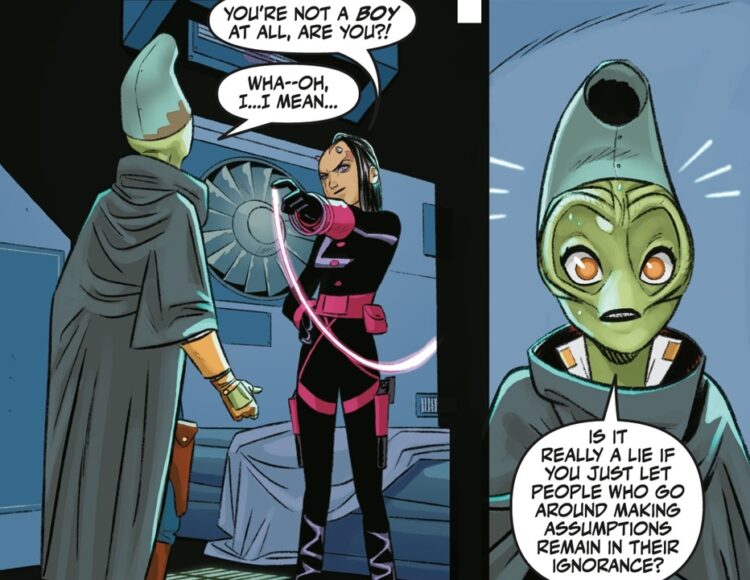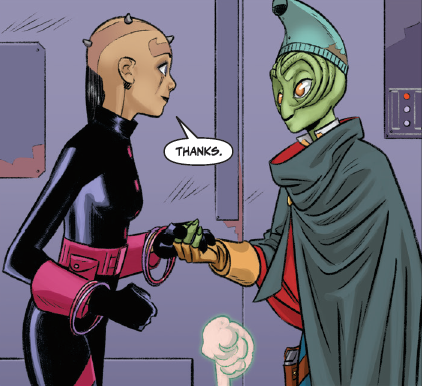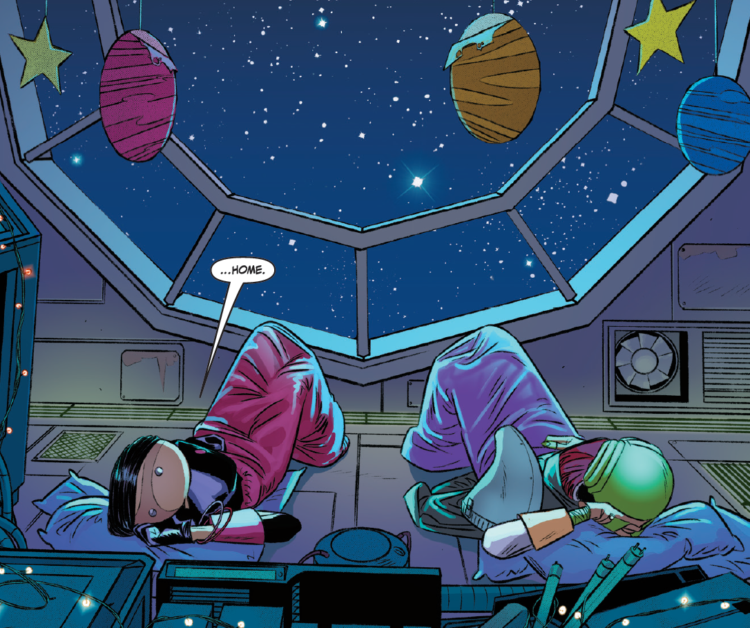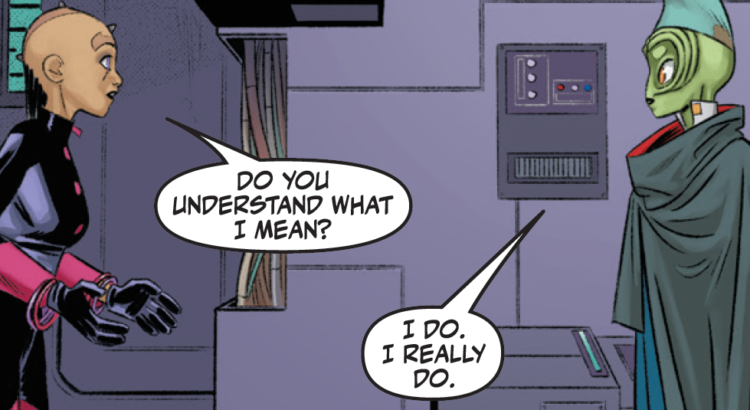It was the dress rehearsal dinner for my cousin’s wedding. Casual clothes for everyone in attendance; it was a hot California day, with a grimy rock outcropping just beyond the grassy seating area.
I’d managed to play chicken with my mother to get my hair cut shorter than my jawline. My shirt was baggy enough to conceal the growing chest I fought by way of multiple sports bras. And so as a gaggle of boys scrambled their way to the outcropping to play, I raced after. It was the age of cooties and “no girls allowed”, so my name I kept locked behind my teeth. They never asked and they never noticed.
I bounded up to my mother afterwards, saying how much fun it was that they all treated me like a boy.
Things like this were what made adults in my life terrified that I’d grow up to be a lesbian. I wasn’t allowed to cut my hair like the boys because People Would Think Things™. “I’m not gay”, I would say years later to gasps of relief, only to add, “but I don’t want to be perceived as a girl.”
Oh, the reassurances rushed in – there’s so many ways to be a woman, you don’t have to be girly – but the fact remained. Young or old, gathering with extended family or browsing the feminine product aisle at Walmart, being mistaken for a boy felt like home.

As I grew up on various Jane Austen adaptations, I found myself aching to play the boy’s role. Not romantically, but to be the Mr. Knightly swooping in to rescue Harriet Smith from public rejection. The Colonel Brandon or Mr. Darcy on whom the heroine’s family could rely.
Sav Malagán’s disguise as the boy Bazrip Ratht, her comfort with Arkik calling her “Mister”, and the brief panel where she helps Saya to her feet – holding her hand in quite the gentlemanly manner – felt like snapshots of those moments. Those times in childhood where my body actually felt like my own.
I wouldn’t understand the term “transgender” until I was in my twenties.
I wouldn’t know that it could apply to me until I was nearly thirty.
And even when I embraced it, I felt like an imposter among my own gender. The man I want to become felt leagues away.

There is another queer element to the fourth issue of The High Republic Adventures. We spend this issue getting to know a sapphic teenager, Saya Keem, who has seen through at least the gender part of Sav’s disguise and looks to be crushing hard on the Jedi girl. However, despite the fears of adults in my life, that’s not an experience on which I am able to provide a perspective. And yet, Saya herself in this issue still resonates with me.
The most arduous part of growing up a girl was the romantic expectations. My future was set from the moment they assigned my gender. The church, media, my family, my peers, all pushed the same narrative: my adulthood would involve marriage, sex, and motherhood. So, as the end of college loomed, I experienced a growing sense of failure.
Peers all around me were not just graduating but also getting married. They were setting forth into their next chapter with a partner at their side, all while I was steeling myself to break up with the last boyfriend I would ever have. As I accepted invite after invite to wedding after wedding, it gnawed on my mind.
They were moving on with their lives, and by returning to singleness, I had just hit pause on mine.
Never mind that I was demonstrably an adult in every other way, from my job, to paying bills, to working toward my career through grad school. I didn’t feel like an adult because I didn’t match the narrative that been handed to me.
The Asexual Awakens – An Interpretation of the Journey to Adulthood
The pressure to match a specific adulthood – one of femininity, romance, and sex – caused deep harm from an early age. “Aromanticism” and “asexuality” became the two most freeing words I had ever heard. Realizing that those words described me, I discovered that my adulthood didn’t have to follow society’s prescription.
It wasn’t going to look like my peers. It wasn’t going to fit the mold that I’d been assigned. It wasn’t going to be the perfect husband with the white picket fence, and a mathematically impossible number of children.
It was going to be uniquely me.
Which meant it was going to be imperfect.
As Saya leads Sav around the Dank Graks’ ship, we learn several things about her. Like Sav, she ran away from a restrictive home and found a new family amongst outlaws. However, unlike Sav, she didn’t find the best crew to fall into. As Lia, a fan of The High Republic Adventures points out:
Compare[d] to Sav’s healthy if dysfunctional queer family (Maz’s pirates), the Graks can be seen as way more focused on themselves and not on their community, and Saya suffers as a result, all the labor falling onto her shoulders whereas work seems much more distributed in Maz’s group.
It’s a common scenario in our real world: the vulnerability of a queer kid trying to find their community, and being willing to put up with a toxic version of it just for the chance to be themselves. Saya’s life with the Dank Graks results in major parentification by the adults around her, especially Arkik and Lavalox. Saya knows this is not a good life; but it’s the best she’s ever had. And so she carves out a space for herself.
Peeling dioramas of planets, fairy lights strung over messy cargo crates, a sleeping pouch with no mattress facing the beauty of space.
Imperfect. But uniquely Saya Keem.

As I was collecting my various thoughts on this issue of The High Republic Adventures, letting them tumble into some sort of coherency, snapping them into place like a jigsaw puzzle, the realization hit: I’m already the man I want to be.
Oh, there are transition goals I’m working toward. There’s flaws I have to overcome, some of which I’m hyperaware, some of which I’m ignorant. The things I want to be – a reliable member of a community, a loyal friend, a caring neighbor – I stumble through. Fucking up every step of the way. A far cry from the “good wife” that I’d been told I’d one day make.
But even in all the things I’ve done wrong, with all the times I’ve tripped and ate shit, this man I am will always be truer than the perfectly prescribed woman I was supposed to be.
I figure I’m always gonna be a bit broken and I’m okay with that; I can work just fine. I can be the person I want to be and still be a bit fucking broken.
Ashton Greymoore (as played by Taliesin Jaffe)
It’s not that Saya shouldn’t hope for a better, healthier community. It’s not that I shouldn’t strive to become a better man. But a common element of the queer experience is learning to find – learning to make – your home wherever you are in that moment. It’s survival. It’s joy.
Yes, some things need desperate change. No, this cannot be where we reside forever.
But it’s better than anywhere we’d been before.
So for the moment, let’s call it home.

